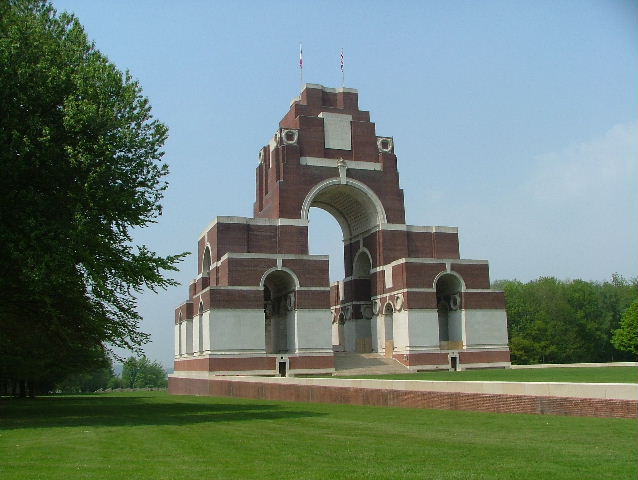Name
Cecil William Gravestock
Conflict
First World War
Date of Death / Age
15/07/1916
20
Rank, Service Number & Service Details
Rifleman
C/16
King’s Royal Rifle Corps
16th Bn.
Awards: Service Medals/Honour Awards
1914 /15 Star, British War and Victory medals
Cemetery/Memorial: Name/Reference/Country
THIEPVAL MEMORIAL
Pier and Face 13A and 13B
France
Headstone Inscription
NA
UK & Other Memorials
Croxley Green Village Memorial, Croxley Green, All Saints' Church Shrine, Croxley Green, John Dickinson & Co Memorial, Croxley Mill, Croxley Green, Rickmansworth Urban District Memorial
Pre War
Cecil was the fifth of six children (alive in 1911) of George and Emma (nee Wheeler) Gravestock of 321 New Road. He was born at Croxley Green on 26th May 1896 where he was baptised on 5th July 1896. Like his father and siblings, Cecil worked at Croxley Mill. He was one of the Croxley Green Church Lads who enlisted in September 1914.
In his army records his trade is listed as ‘printer’. All Saints’ Parish Magazine commented that it was only seven years since he and Frank Arnold, killed just a month earlier, were both playing together in the school football team.
Recorded as enlisting in Watford.
Wartime Service
Rifleman Cecil Gravestock was killed outright during the attack by the 16th KRRC on High Wood on 15 July during the battle of the Somme.
Cecil had joined the 16th Church Lads’ Battalion of the KRRC in September 1914. He moved with the battalion to France on 16 November 1915. He was wounded in the arm and thigh in February 1916 but returned to duty only a week later. Ironically, three days before he was killed, he was judged guilty of making an improper remark on parade and sentenced to 28 days field punishment.
The 16th KRRC was to support the advance of the 1st Queens and 9th Highland Light Infantry. ‘C’ Coy came under hostile machine-gun fire as the advance began and lost heavily. They carried on and advanced to the old line vacated by the 1st Queens along the sunken road, running from the north-east corner of Bazentin le Petit village to the north-west corner of High Wood. As the 1st Queens had found the wire uncut and had come under hostile enfilade of enemy machine-gunfire, ‘C’ Coy joined up with their right flank. Here they remained all day under enemy machine-gun fire and sniping. ‘B’ Coy’s objective was the north-west corner of the wood. At the top of a hill they came in touch with the 9th HLI, most of whom were lying wounded or killed by German fire from the wood. Here they met the enemy’s machine-gun fire and only a small party of ten reached a position within 25 yards of the sunken roadway. Eventually only two of this party arrived back untouched. ‘D’ Coy was sent up to reinforce the 9th HLI. They remained all day holding a position along the south end of High Wood, under intermittent shell-fire and continual machine-gun sniping. They were relieved at 3pm. ‘A’ Coy took up a position along the south-east edge of High Wood. Here they received orders to advance to the further edge of the wood, then to rush through the wood and capture the far trench at the north corner of the wood. The line of the advance was held up by a blockhouse containing enemy machine-guns which caused many casualties.
Acknowledgments
Malcolm Lennox, Tanya Britton, Brian Thomson, Croxley Green in the First World War Rickmansworth Historical Society 2014



